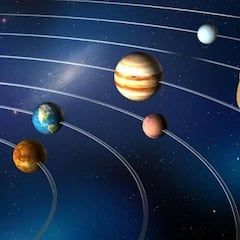
Matteo Paz He was a young man who fell in love with science and astronomy thanks to talks in Caltech (Technological Institute of California). Years later, and as a high school student more than applied, in love with this unknown part and with the artificial intelligence On his side, he participated in the Planet Finder Academy program to deepen astronomy and related computer science.
It was his mentor Davy Kirkpatrickan experienced astronomer of IPAC (Infrared Data Analysis and Processing Center) who gave access to Neowise infrared telescopewhich has been scanning the sky for more than ten years in search of asteroids reliably, and has also compiled a gigantic data figure on other objects.
The telescope registered the thermal radiation of stars, quasars and all kinds of pulsating and eclipsessing luminaires (astronomers call them variable objects). And the amount of information is so overwhelming, billions of records, that deciphering it seemed practically impossible.
Thus, between the two, but especially with the student’s programming course, of computer theory and even with knowledge of advanced mathematics at the university level, he realized that these data, organized, were perfect for artificial intelligence.
In six weeks he created a own automatic learning algorithmto teach AI to look for revealing signs of variability in the telescope data, small changes but consisting of the brightness of objects over time, which could reveal interesting cosmic phenomena.


After a summer of work, the program identified and classified 1.5 million potentially new variable objects. A whole world of totally unexplored data from the universe. Now a complete catalog with the findings will be published, making it available to the whole scientific world.
Your opinions matter! Comment on the articles and subscribe for free to our newsletter and informative alerts in the App or the channel of WhatsApp. Are you looking to license content? Click here






